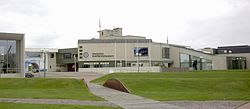
A ship is a large vessel that travels the world's oceans and other navigable waterways, carrying cargo or passengers, or in support of specialized missions, such as defense, research and fishing. Ships are generally distinguished from boats, based on size, shape, load capacity and purpose. Ships have supported exploration, trade, warfare, migration, colonization, and science. Ship transport is responsible for the largest portion of world commerce.
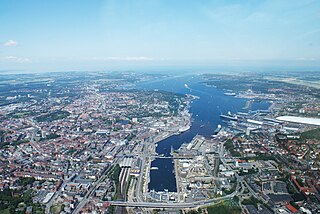
Kiel is the capital and most populous city in the northern German state of Schleswig-Holstein, with a population of 246,243 (2021).

Aktien-Gesellschaft "Weser" was one of the major German shipbuilding companies, located at the Weser River in Bremen. Founded in 1872 it was finally closed in 1983. All together, A.G. „Weser" built about 1,400 ships of different types, including many warships. A.G. „Weser" was the leading company in the Deutsche Schiff- und Maschinenbau AG, a cooperation of eight German shipbuilding companies between 1926 and 1945.
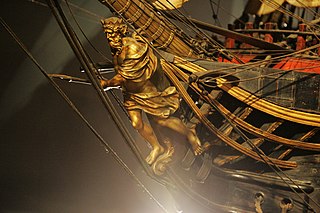
A figurehead is a carved wooden decoration found at the bow of ships, generally of a design related to the name or role of a ship. They were predominant between the 16th and 20th centuries, and modern ships' badges fulfil a similar role.

German submarine Wilhelm Bauer is a Type XXI U-boat of Nazi Germany's navy (Kriegsmarine), completed shortly before the end of World War II. It was scuttled at the end of the war, having never gone on patrol. In 1957, it was raised from the seabed off Flensburg Firth, refurbished, and recommissioned for use by the West-German Bundesmarine in 1960. Finally retired fully in 1983, it is the only floating example of a Type XXI U-boat. It has been modified to appear in wartime configuration and exhibited at the German Maritime Museum in Bremerhaven, Germany.
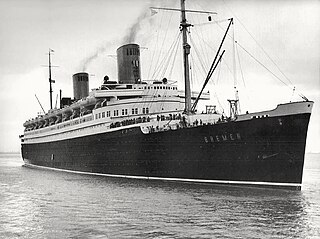
SS Bremen was a German-built ocean liner constructed for the Norddeutscher Lloyd line (NDL) to work the transatlantic sea route. Launched in 1928, Bremen was notable for her high-speed engines and low, streamlined profile. At the time of her construction, she and her sister ship Europa were the two most advanced high-speed steam turbine ocean liners of their day. The German pair sparked an international competition in the building of large, fast, luxurious ocean liners that were national symbols and points of prestige during the pre-war years of the 1930s. She held the Blue Riband, and was the fourth ship of NDL to carry the name Bremen.

SS American Victory is a Victory ship which saw brief service in the Pacific Theater of Operations during the final months of World War II, the Korean War from 1951–1954, and the Vietnam War from 1966–1969. Built in June 1945, she carried ammunition and other cargo from Los Angeles to Southeast Asia, then ferried cargo, equipment and troops back to the U.S. after the war ended. She survived two typhoons and one hurricane.
Norddeutscher Lloyd was a German shipping company. It was founded by Hermann Henrich Meier and Eduard Crüsemann in Bremen on 20 February 1857. It developed into one of the most important German shipping companies of the late 19th and early 20th centuries, and was instrumental in the economic development of Bremen and Bremerhaven. On 1 September 1970, the company merged with Hamburg America Line (HAPAG) to form Hapag-Lloyd AG.

Bremer Vulkan AG was a prominent German shipbuilding company located at the Weser river in Bremen-Vegesack. It was founded in 1893 and closed in 1997 because of financial problems and mismanagement.

Deutschland was a blockade-breaking German merchant submarine used during World War I. It was developed with private funds and operated by the North German Lloyd Line. She was the first of seven U-151-class U-boats built and one of only two used as unarmed cargo submarines.
Nobiskrug is a shipyard located on the Eider River in Rendsburg, Germany, specialized in building innovative, custom-made luxury superyachts.
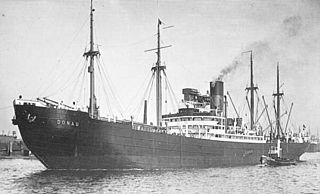
SS Donau was a Norddeutscher Lloyd (NDL) refrigerated cargo steamship that was built in Germany in 1929 and sunk in occupied Norway in 1945. In the 1930s she sailed mostly between Bremen and the West Coast of the United States via the Panama Canal.
Ingo Heidbrink is a German maritime historian who is Professor of History with a specialization on Maritime History at Old Dominion University in Norfolk, Virginia. He is specialized on Fisheries History, Traditional Watercraft and Museum Ships, Methodology of Maritime History and interdisciplinary research projects. Since Summer 2021 he is Chair of the Department of History at Old Dominion University.

Bremerhaven is a city on the east bank of the Weser estuary in northern Germany. It forms an exclave of the city-state of Bremen. The River Geeste flows through the city before emptying into the Weser.

Leif Höegh & Co is a shipping company founded in 1927 by Norwegian Leif Høegh (1896-1974). Since 2006 the company has been structured as two separate entities, Höegh Autoliners and Höegh LNG, with Leif Höegh & Co acting as a common holding company.

The Bremen cog is a well-preserved wreck of a cog dated to 1380, found in 1962 in Bremen. Today, it is displayed at the German Maritime Museum in Bremerhaven as one of the main features. Three nearly identical replicas of this cog have been built: Ubena von Bremen, Hansekogge, and Roland von Bremen.
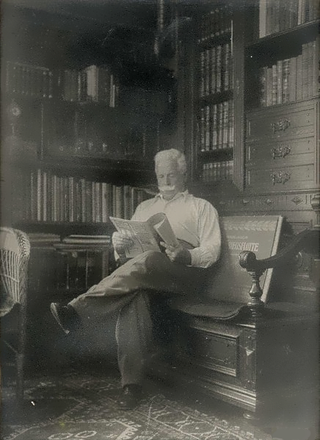
Alexander Kircher was an Austrian-German marine and landscape painter and illustrator. Many of his paintings can be seen in museums in Germany, Austria, Croatia, and Slovenia while others are held by private owners in those same countries, as well as the United States of America, Great Britain, Scandinavia, and Greece.

Seute Deern is a wooden, gaff-rigged ketch built as the cargo ship Havet in Svendborg, Denmark in 1939 for Captain Karl Lorenzen. Sold in 1956 to J. Lauritzen and renamed Noona Dan. Noona Dan circumnavigated the world in 1961/1962 on the Danish research cruise known as the Noona Dan expedition to the Western Pacific Ocean. After the expedition the ship was sold to Germany as a training ship, first owned and operated by Deutsche Schulschiff-Verein and 1973 by the German Clipper association. She continues to sail with young people on training cruises in the Baltic Sea. In winter the ship is moored at Hamburg-Harburg.

Submarine signals had a specific, even proprietary, meaning in the early 20th century. It applied to a navigation aid system developed, patented and produced by the Submarine Signal Company of Boston. The company produced submarine acoustic signals, first bells and receivers then transducers, as aids to navigation. The signals were fixed, associated with lights and other fixed aids, or installed aboard ships enabling warning of fixed hazards or signaling between ships. ATLAS-Werke, at the time Norddeutsche Maschinen und Armaturenfabrik, of Germany also manufactured the equipment under license largely for the European market.

